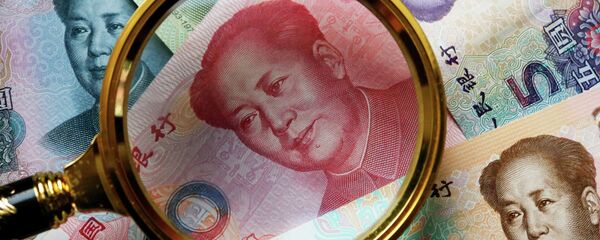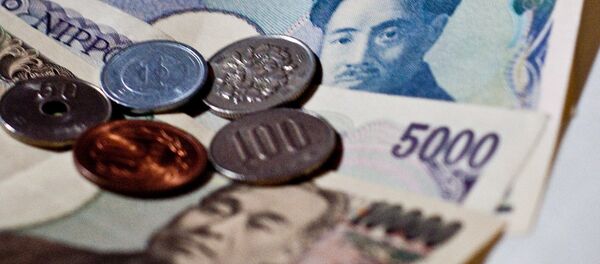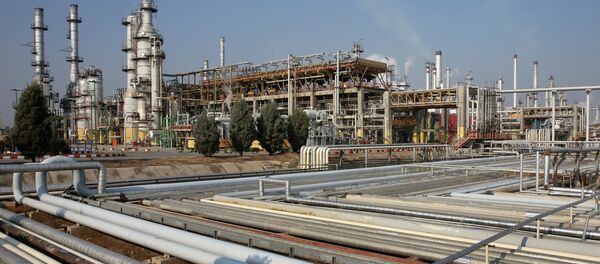Kristian Rouz — Global crude prices dropped to their 6-year lows during past three months, although summer is traditionally a peak season on the demand side of the oil market.
On the demand side, however, financial turmoil and broader economic complications in the world’s second crude consumer, mainland China, have indicated a further decline in energy imports, exacerbated by the renminbi’s slight devaluation.
Even the top oil consumer, the US, is more self-sustainable in terms of energy supply these days, as evidenced by the Obama administration’s recent move to allow oil exports to Mexico, a historic breach in the 40-year ban on US energy exports.
As downward trends are prevailing, the global oil market is dominated by bears with prices projected to slide unless global economic growth accelerates.
In the US, oil futures dropped some 30% since early June, their biggest decline since 1983, when the WTI oil contract was first introduced to the market.
That said, the current oil situation has by far outdone the 1986 ‘oil bust’, resulting from the price war between the US and the Saudis back in the day.
The last time the oil prices declined over the heated summer season was in 2011. That year, during the June to August period, oil lost 21% of its value when the world’s biggest oil producers put in the market a stunning 60 mln bbl against the background of the French-led military operation in Libya.
On Friday, the US benchmark oil, WTI, dropped to $41.35/bbl, and this decline is far from over. Currently, the demand for oil in North America is above this year’s average and is projected to shrink as the autumn starts, with major refineries partially closing for maintenance, and a decreased use of transportation after the summer holidays are over is only to add to the slump.
According to US Department of Energy data, petrol consumption in the US hit its 8-year highest this year, reaching 9.7 mln bpd in July, but even such outstanding development gave but little support to the price of oil.
Meanwhile the once powerful global oil cartel, OPEC, has repeatedly rebuffed any allegations of possible cuts in oil extraction. The traditional oil producers are no longer a determinant factor in the oil market.
Amidst the oversupply of fuel, global energy trading is – for the first time since the early 1970s oil crisis – a downstream market again, meaning the market participants now have all eyes on the developments on the consumption side.
The global oil prices might drop to as low as $10/bbl, which is the cost production level in some of the OPEC nations. The Saudis are still waging a price war against the US private drillers, which started late last year. However, the supply side is determining the price, and one of the biggest factors to watch is mainland China.
The mainland’s currency extended losses during the week, performing its worst since 1994 and rendering the made-in-China goods cheaper, but also meaning dearer imports for the Chinese manufacturers and consumers.
Eventually, that might trigger an even greater decline in oil consumption by China, further depressing the global price.
Among the Middle Eastern factors, Iran is still drawing the most attention, with the nation’s petrochemicals exports rising this week after the international sanctions had been lifted. Iran’s crude exports are still expected to grow, adding to the bearish sentiment in regard to oil price.
By late 2016, Tehran is expecting to increase the country’s petrochemicals exports by 20-25%, as reported by the state-controlled news agency IRNA today. Albeit that might be a propaganda trick aimed at misleading the global market participants, there is little doubt that greater exports of crude oil and oil products from Iran are a matter of mere months.
Another factor is Oman. The Middle Eastern nation’s oil extraction exceeded 1 mln bpd in July, with 894,000 bbl of crude and 107,000 bbl of condensate produced on a daily basis.
However, Oman’s exports shrank that same month by 13% compared to June levels, down to 797,000 bpd. That comes as little surprise as the biggest importer of Oman’s oil is mainland China, accounting for 69% Oman’s exports. Japan comes in second, buying 15% Oman’s oil. The rest goes to the Republic of China, Singapore and Thailand.
Meanwhile, in the US, money managers cut net long-term crude futures and options.
This week, oil-related financial instruments dropped to their lowest since 2010. The traders are still above the market as the oil itself is at its 2009 levels. Goldman Sachs, however, attributed the oil decline to the devaluation of the renminbi in mainland China, as it signaled a weaker global growth to the markets.






